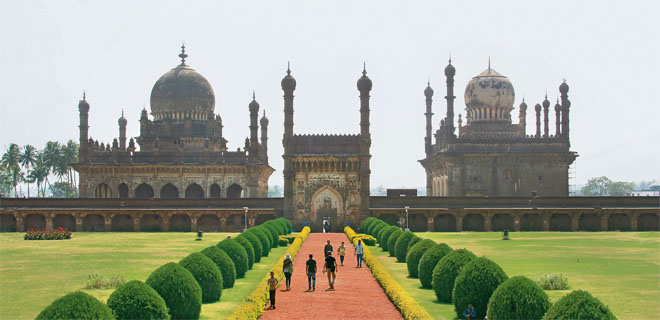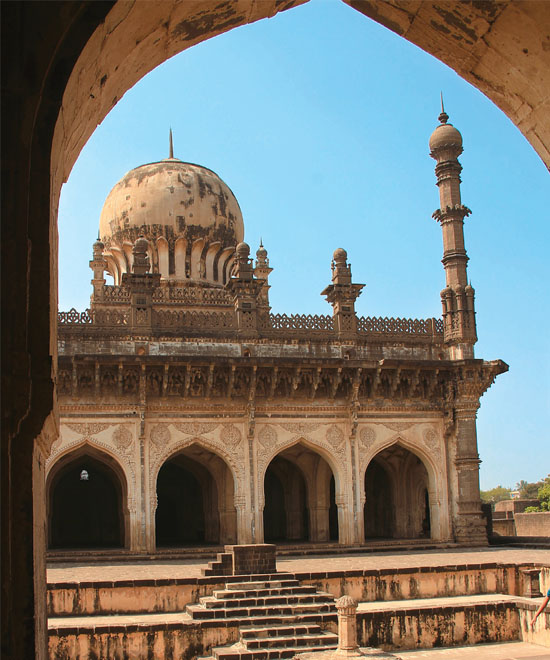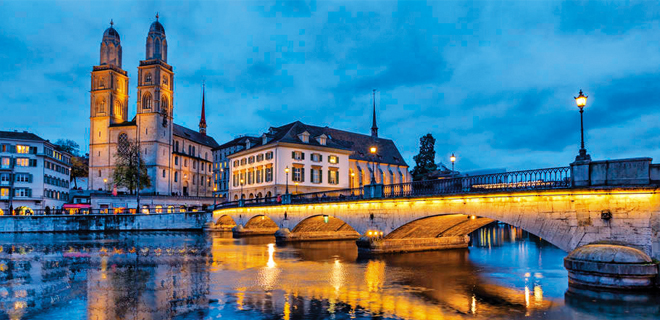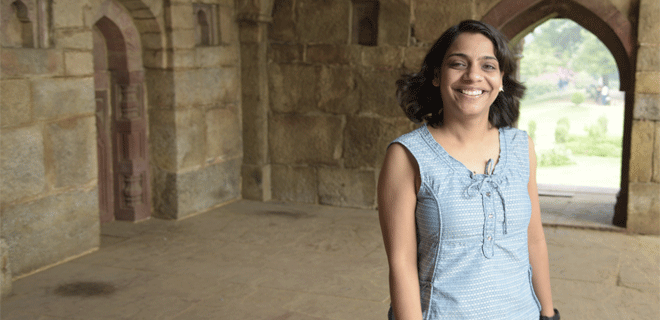The Ghostly Gumbaz
With its splendid architecture and glorious history, Gol Gumbaz is a monument to marvel upon

The first thing that you notice as you drive towards Bijapur is Gol Gumbaz marking the city’s skyline with distinction. This mausoleum standing in a city which teems with historical monuments made our 550 km long drive from Mumbai worthwhile. But this stunner has to be visited in the absence of heat, and nincompoops. Bijapur, now Vijayapur, has a glorious past. Although this fertile region has been inhabited since the Stone Age, it owes its current historical grandeur to the Adil Shahis. It was the capital of the Adil Shahi kings for a period of two centuries from 1489. The city is an open air gallery of the past with palaces, fortifications, gateways, cisterns, bastions, mausoleums and mosques scattered all around. The Bahmani Sultanate split five ways in the early 1500s and Bijapur became one of the five Deccan Sultanates. The rule of the Adil Shahi dynasty fell to the might of Aurangzeb. It then passed hands to the Nizam of Hyderabad, then the Marathas and finally the British. It’s uncanny how all rulers always have had the same idea—to topple each other.

The second largest dome in the world after Saint Peter’s Basilica in Rome, the largest dome in India—Gol Gumbaz—was built by a Persian architect. It is an acoustic and architectural wonder. When you enter its expansive grounds, the dome seems to be perched on the cubicle building, Naggar Khana, which is now an ASI museum. As you draw nearer, you realise the dome has disappeared! It is designed as an illusion of sight. The actual Gol Gumbaz is right behind Naggar Khana and the royal guest house. You might clearly see the joke is on you when in the afternoon heat you have to walk the extra distance.
The cubicle structure (156ft oneach side) wearing the cap of a dome (144ft in external diameter) houses the grave of Mohammed Adil Shah. It is simple in design and is supported by arches and four seven-storey high towers on each side. The central chamber echoes sound at least seven times, and the whispering gallery at the top is almost ghostly in character. As soon as we entered it, we saw the cenotaphs in the centre marking the position of the actual graves below and heard drones of ghosts shouting derisively above our heads. Flocks of tourists go to the top and shout at the top of their voices. It’s a ‘whispering gallery,’ for god’s sake!
Only the sentry at the gate seemed to know the meaning of whisper. He told us that the graves were that of Momammed Adil Shah, his two wives, daughters, and added conspiratorially in a whisper, “and lover.” We nodded, and retraced our steps to the ASI museum; couldn’t gather the courage to explore the Gombaz with the crowds. From there we drove around the city checking out the numerous monuments like Mallika-e-Maidan—the largest medieval cannon weighing 55 tonnes. The stunner was Ibrahim Roza (I’m exercising my right of proper noun pronunciation and not spelling it Rouza), the most ornate building of Bijapur, which is said to have inspired Taj Mahal. It has a tale to match. Ibrahim Adil Shah II made this mausoleum for his wife, but fate had other plans. He died before her and was laid to rest there. It has a gorgeous mosque opposite it with a fountain in between. The twin structures have intricately carved minarets and domes rising from lotus petals. The latticed windows and carved wooden doors continue to declare the Sultan’s love for his wife. Some losers have tried to do the same by making ugly graffiti on the wooden doors.
Mallamma, who runs Sabala Heritage, a country guest house away from the unclean city and its ‘international’ hotels, advised us to visit the dome early. The next day, at the crack of dawn (a little before 6 AM.) we went and woke up the ticket counter guy at the Gol Gumbaz. Once he had grudgingly given us the tickets, we walked briskly to the dome and took along a guide. The first ones inside the Gumbaz, this time we were stupefied by its immensity, silence and solitude. The guide started explaining to us how the graves were constructed and the deceased laid to rest differently in their Sunni Muslim culture than other sects of Islam. He took us up one of the towers explaining their Sunni architecture in detail. On several occasions he pointed how their faction’s methods and observances were different from Shias and other Muslim sects.
Right at the top, around the dome is the dimly lit Whispering Gallery. He made us sit on a bench and walked diagonally opposite us more than 120 feet away, where we could barely see him. From there he rustled coins in his pocket, struck a match, clapped and sang and the sounds amplified and echoed overwhelmingly. Before the Sultan’s death, this dome was used for performances. He would sit diagonally opposite his wife and could talk to her in a whisper. I tried that with my partner, sitting and talking 120 feet away, and experienced the supernatural for the first time: an invisible Aditya whispering in my ear!
We exited the dome just as the overexcited and unbalanced crowds started to enter and howl. But our charm was not broken. While parting we asked the guide his name and he said, “Ramesh.” Ramesh! And all this while we were thinking he is a Sunni Muslim talking about his culture! Ramesh would give us a run for our tolerance.
As we drove away from Bijapur with the haunting memory of the whispering gallery, we wished the city and its monuments were cleaner and more organised. What a priceless treasure we have. We recalled our visit to the underground city of Naples with its planned tours conducted by disciplined volunteers. How difficult can it be to stand in queue, throw garbage in bins, preserve…not defile ancient heritage and not scream in a ‘whispering’ gallery? Alas, it is difficult for us despite our “5000-year-oldcivilisation”.









